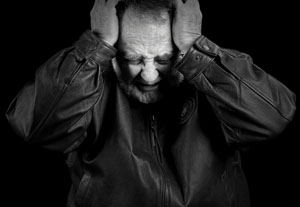Self Injury: Cutting Vs. Burning
Dr. Taji Huang, Ph.D., offers professional therapy for those struggling with the urge to self-injure by burning in Glendale, CA. If you or someone you care about has struggled with burning as a form of self-harm, you likely have many questions.
- Why do I keep burning myself?
- How can I stop burning myself?
- Are certain people more likely to self-injure in this way?
- How can parents of kids and teens who self-injure this way cope?
What Is Burning?
Burning yourself is one of several forms of self-harm or non-suicidal self-injury (NSSI). Self-injury occurs when a person intentionally, repeatedly, and often impulsively harms themself; it is usually not an intentional suicide attempt.
A qualified, experienced therapist, like Dr. Taji, can help you learn healthier coping mechanisms in response to self-harm triggers.
Cutting Vs. Burning
Of all the forms of self-harm, cutting is probably the most prevalent and also most widely known. However, cutting is far from the only type of self-mutilation. Cutting involves scratching or cutting into the skin with a sharp object. Burning consists of burning or branding the skin, usually with lit matches, cigarettes, or sharp, heated objects such as knives.
Both types of self-injury generally stem from the same root causes and affect a wide variety of people.
Self-Injury By Burning
Burning yourself is a harmful coping mechanism for emotional pain, anger, or frustration. Burning may seem to offer a momentary sense of calm and an emotional release, but it is often followed by feelings of guilt and shame. You will most likely experience the same emotions that triggered your burning episode again. This results in a cycle of behavior that can be difficult to overcome without help.
Why Do I Burn Myself?
There is no single cause of self-harm, regardless of the way it’s done. Self-harm can be a result of an inability to deal with psychological pain or difficulties with expressing, understanding, and regulating emotions.
Several possible motivating factors trigger burning behaviors.
- Reduce Stress Or Anxiety
- Distract From Painful Emotions
- Regain A Feeling Of Control
- Feel Something
- Express Internal Feelings In An External Way
- Communicate Feelings Of Depression Or Distress
- Punish Yourself For Perceived Faults
Self-Injury Risk Factors
Teenagers and young adults are the age groups that most frequently self-injure. There are many risk factors that can increase the likelihood of self-harm behaviors like burning.
- Neglect
- Sexual, Physical, Or Emotional Abuse
- Traumatic Events
- Unstable Family Environments
- Questioning Personal Or Sexual Identity
- Social Isolation
- Mental Health Issues
- Alcohol Or Drug Use
If you are an adult with a history of burning or are a parent trying to learn how to cope with this behavior in your own children, Dr. Taji can help.
How Can I Stop Burning Myself
When you’re tired of the guilt and the scars, it’s time to seek the help of an understanding psychologist, like Dr. Taji Huang, PhD. Therapy is a significant step to begin the process of healing from self-harm behavior.
- Psychotherapy / Talk Therapy
- Cognitive Behavioral Therapy (CBT)
- Dialectical Behavior Therapy (DBT)
- Post Traumatic Stress Therapies
- Group Therapy
Free Yourself From Self-Harm In California
Your self-harm scars do not have to define you or continue to multiply. Allow yourself to heal physically, mentally, and emotionally so you can go on to lead a life free from the desire to burn yourself. Dr. Taji Huang, PhD, is here to help you in Glendale, CA. Contact her office today to take that first step towards recovery.











